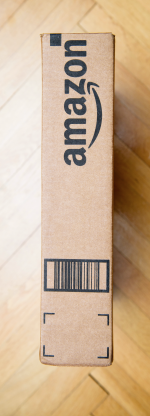AMAZON FBA
When Amazon FBA came on the scene (Fulfilled By Amazon), it was a revelation for many Amazon Sellers.
On September 19th, 2006, Amazon launched Fulfillment by Amazon. The new service gave small businesses the ability to use Amazon.com’s own order fulfillment and customer service infrastructure, as well as giving customers of Amazon.com more shipping offers when buying from 3rd-party sellers.
It was a monumental moment in online selling history.
Making It Easy — What is FBA?
Items purchased on Amazon from third-party sellers are either fulfilled by the merchant (FBM) or by Amazon (FBA). FBM goods are kept in the third-party seller’s inventory, and shipping and customer service are handled by the third-party merchant. FBA goods are stored in Amazon’s fulfillment centers, and shipping and customer service are handled by Amazon.
The convenience of FBA was huge when introduced. For a fee, anyone could use Amazon to warehouse and fulfill orders, removing the need for merchants to maintain their own warehousing and/or fulfillment and customer service. People who might not have otherwise gone into retail were able to do so with little start-up cost.
Thus began an upward spiral of growth for Amazon.
Amazon FBA Business — The Surge And The Flywheel
We all know the story of Amazon. If not the details, we at least know the highlights. Amazon is now the second company ever in history to reach a trillion dollar valuation, and its founder and owner solidly occupies the top spot on the list of richest people in the world.
Early on in its existence Amazon laid out what it calls the the flywheel principle. In the book, The Everything Store , author Brad Stone says,
Bezos and his lieutenants sketched their own virtuous cycle, which they believed powered their business. It went something like this: lower prices led to more customer visits. More customers increased the volume of sales and attracted more commission-paying third-party sellers to the site. That allowed Amazon to get more out of fixed costs like the fulfillment centers and the servers needed to run the website. This greater efficiency then enabled it to lower prices further. Feed any part of this flywheel, they reasoned, and it should accelerate the loop.
From those beginnings they continued to pour improvements into all facets, making it:
By continuing to improve these two points Amazon fed the machine, adding momentum to the flywheel and spinning it faster.
Thus a surge was born.
The Next Level
With FBA Amazon took things to the next level. By making it easier for sellers to get started, by handling the logistics that would otherwise stand in the way of founding and growing a new business, Amazon made it almost a no-brainer. Listing with Amazon became a given for any online seller. Add to that the fact that more and more customers were flocking to Amazon to search for products, and it’s easy to see why the introduction of FBA in 2006 signalled a titanic shift for the retail giant.Other platforms have struggled to keep up.
In fact, last year Amazon accounted for 49% of all global online shopping traffic. Take a moment to digest that figure. Of all shopping done online, worldwide, fully half of it was done on Amazon.
That’s not just huge, that’s something that simply cannot be ignored.Just about any and all businesses now, by necessity, keep at least a presence on Amazon. Not all fulfill through Amazon, but a great many do.
How To Sell on Amazon
Selling on Amazon is easier than standard retail. As stated above, Amazon has gone out of their way to make it so. They’ve continued to push the envelope with new and emerging technologies, cutting-edge supply-chain logistics, just-in-time fulfillment and a host of other efforts meant to make it easy to list your products with them. Their corporate work ethic is legendary.
As a result, in order to list and sell with FBA you simply need to sign up for a Pro Seller Account. They have an interface called Seller Central, which makes it very easy to manage listings and products.
What’s more, due to the popularity of the Amazon FBA platform, many service industries have sprung up to assist Amazon Sellers. From training and coaching to tools for managing your Amazon business.
Again, an example of the flywheel in action. Energy begets energy, and each positive feeds the next. Amazon is a shining example of this principle in action.
As an aside, that’s not a bad philosophy for life, either.
Become An Amazon FBA Seller
If you’re selling online you’re probably already listed with Amazon. If you’re not yet selling online, Amazon FBA is a great place to start.Amazon has officially secured its spot as a global phenomenon which can no longer be ignored. Amazon FBA has made it incredibly easy for sellers to participate in the action.
To your success,
Your ManageByStats Team





